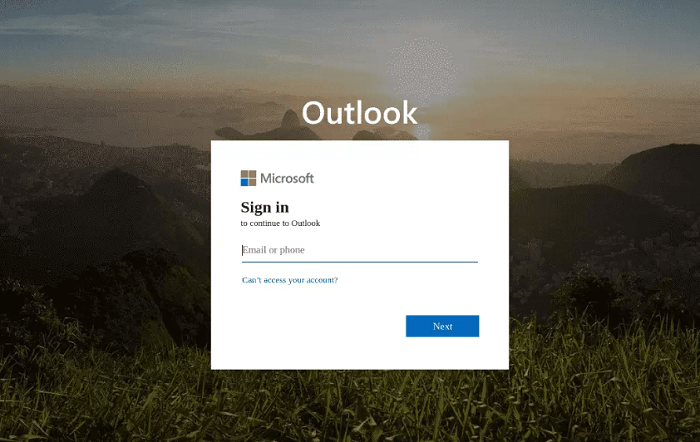Outlook for UbuntuMicrosoft Outlook is a software system for personal information manager from Microsoft, which existed as a component of the Microsoft Office Suite. Also, Outlook contains functions such as web browsing, journal logging, note-taking, contact managing, task managing, and calendering though it is mainly an email client. Individuals can utilize Outlook as a standalone software; organizations can use it as a multi-user application (through Microsoft SharePoint and Exchange Server) for many shared functions such as appointment scheduling, folders, calendars, mailboxes, and data aggregation (like SharePoint lists). Microsoft has published applications for most platforms of mobile including Android and iOS. The devices of Windows Phone can synchronize most Outlook data to Outlook Mobile. Also, developers can create their custom software with the help of the Microsoft Visual Studio which operates with Office and Outlook components. Microsoft published the launch of the new features series for appealing to the customers of business of its Teams platform in March 2020. Now, the collaboration and chat module contains more integrated and efficient waypoints, created for simplifying group work for enterprises and encouraging enterprises to accept the Microsoft environment to become the go-to enterprise chat platform. Web Applications of OutlookOutlook.com is a freely available webmail Microsoft Outlook version. It uses the same user interface. It was originally called Hotmail but in 2012 re-titled as Outlook.com. Outlook on the web (formerly known as Outlook Web App, Outlook Web Access, and Exchange Web Contact) is a Microsoft Outlook's web business version. It is contained in Exchange Online, Exchange Server, and Office 365. Internet Standard Compliance of Outlook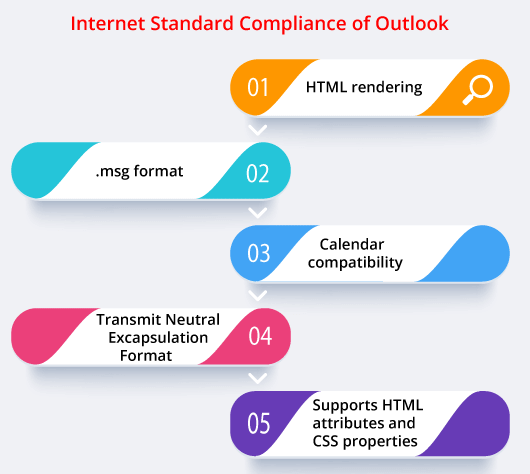
Outlook AppearanceOutlook applies a desktop metaphor containing a closed envelope for unseen messages, a paper clip to display attachments, and an open envelope to read messages. Outlook Security ConcernsMicrosoft took the right steps for fixing the reputation of Outlook in Office Outlook 2003 as a part of its Trustworthy Computing initiative. Office Outlook 2003 doesn't automatically load pictures in HTML emails or allow opening executable attachments among the publicized security aspects and contains a built-in Junk Mail Filter. The 2nd version of Service Pack has augmented these aspects and includes an anti-phishing filter. Add-ins of OutlookThe add-ins of Outlook are small extra programs for the application, i.e., Microsoft Outlook, mainly purposed for adding new functional capabilities in Outlook and automating several routine operations. Also, the term refers to programs in which the main function is to implement Outlook files like backup or synchronization utilities. Outlook add-ins might be created in Microsoft Visual Studio or various third-party tools like Add-in Express. These add-ins aren't supported inside the Outlook Web App. Exchange Client Extensions are compatible in Outlook from Outlook 97 on. The 2000 and later versions of Outlook support particular COM components known as Outlook Add-ins. The exact supported aspects (like .NET components) for later versions were extended with all releases. SalesforceIQ Inbox for OutlookSalesforce disclosed that its SalesforceIQ (relationship intelligence platform) would be capable of seamlessly develop with Outlook in March 2016. SalesforceIQ implements from within the Outlook inbox, offering data from customer social profiles, email, and CRM. Also, it offers recommendations in the inbox on several aspects such as responses, contacts, appointment scheduling, etc. Hotmail ConnectorIt is formerly called Microsoft Office Outlook Connector. Microsoft Outlook Hotmail Connector is a defunct free and discontinued add-in for Microsoft Outlook 2010, 2007, and 2003, intended for integrating Outlook.com (formerly called Hotmail) into Microsoft Outlook. It applies DeltaSync which is a proprietary Microsoft communications protocol that was formerly used by Hotmail. In the 12 version, access to notes, tasks, and online synchronization with the MSN calendar is available only to paid premium accounts MSN subscribers. The 12.1 version published in December 2008 as an upgrade, applies Windows Live Calendar rather than the former MSN Calendar. It means that calendar aspects became free for every user, except for task synchronization which became unavailable. The 12.1 version became a needed upgrade for continuing to apply the service as a part of the migration to Windows Live Calendar from MSN Calendar in April 2008. Social ConnectorIt was a freely available add-in for Microsoft Outlook 2007 and 2003 by Microsoft that permitted social network integration like Windows Live Messenger, LinkedIn, and Facebook into Microsoft Outlook. First, it was introduced on 18 November 2009. Outlook Social Connector can also be described as an Outlook integral part beginning with Microsoft Office 2010. CalDAV and CardDAV ConnectorSince Microsoft Outlook doesn't support CardDAV and CalDAV protocol along the way, several third-party software vendors integrated Outlook add-ins for enabling users to synchronize with CardDAV and CalDAV servers. CalConnect contains a software list that enables users for synchronizing their calendars with CalDAV contacts/servers with CardDAV servers. Importing from email clientsOutlook traditionally supported importing messages from Lotus Notes and Outlook Express. Microsoft Office supports IMAP and POP3 protocols, enabling users for importing emails from servers that support these types of protocols. Microsoft Hotmail Connector add-in aids importing emails through Hotmail accounts. Later, Outlook 2013 developed the functionality of this add-in and included the ability for importing email (a calendar as well) from the Exchange ActiveSync protocol. There are a few ways for getting the emails from Thunderbird; the initial is to apply a tool that can convert a folder of Thunderbird to a format that can be shifted from Outlook Express. This technique must be folder by folder processed. The other technique is to apply a couple of free tools that can keep the real folder structure. An easy technique is to connect the previous mail client to Exchange with IMAP and upload the real mail from the client to Exchange account if Exchange is present. Versions of OutlookOutlook has substituted the previous Exchange client, Schedule, email clients, and scheduling of Microsoft. Outlook 2000 and Outlook 98 provide two different configurations: 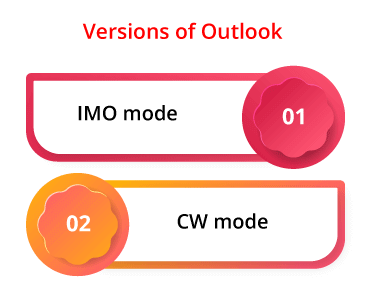
Microsoft WindowsOutlook 2002 Some of the new features in Outlook 2002 are as follows:
Outlook 2003 Some of the new features in Outlook 2003 are as follows:
Outlook 2007 Some of the new features in Outlook 2007 are as follows:
Outlook 2010 Some of the new features in Outlook 2010 are as follows:
Outlook 2013 Outlook 2013 was published on 29 January 2013. Some of its new features are as follows:
Outlook 2016 Some of the new features in Outlook 2016 are as follows:
Outlook 2019 Some of the new features in Outlook 2019 are as follows:
MacintoshAlso, Microsoft published various Outlook releases for traditional Mac OS. However, it was for use with Exchange servers only. It was not offered as an element of Microsoft Office for Mac but rather made present for users by download or from administrators. For Mac 2001, the final release was Outlook which was the same as Outlook 2002 and 2000 apart from being only for the users of Exchange. For Mac OS, Microsoft Entourage was published as an Outlook-like application in Office 2001, but it has insufficient Exchange connectivity. Partial Exchange server support natively became available in Mac OS X along with Service Pack 2 of Entourage 2004. For Mac 15.3, Outlook improves under its predecessors with:
Phones and tabletsIn April 2014, initially published by the venture capital-backed startup Acompli, the enterprise was inherited in December 2014 by Microsoft. Acompli was re-titled as Outlook Mobile on 29 January 2015- sharing its title with the Outlook.com email service and personal information manager of Microsoft Outlook desktop. Microsoft published Outlook for tablets and phones with Office 365 in January 2015. It was the initial Outlook for these environments with contacts, calendars, and emails. Outlook mobile provides its support for several different email platforms and services including Yahoo! Mail, Outlook.com, Google Workspace (G Suite), Gmail, iCloud, and Exchange. The application supports more than one email account at the same time. Microsoft inherited Sunrise Calendar on 4 February 2015. Sunrise ceased to implement and an update was published to Outlook mobile that included enhancements to the functions of its calendar on 13 September 2016.
Temporarily, Outlook Mobile indexes and stores user data (including contacts, calendar, information attachments, and email) with login credentials in the Microsoft Azure server's secure form positioned in the United States. These servers recognize as one Exchange ActiveSync user for fetching email on Exchange accounts. Additionally, the app doesn't support mobile device management, nor permits administrators for controlling how the cloud storage services of a third party are utilized with the app to collaborate with their users. Concerns around these security problems have prompted a few firms including the European Parliament for blocking the application on their Exchange servers. Microsoft organizes a pre-existing and separate Outlook Web Access application for iOS and Android. Installing Outlook 365 (Unofficial) client in UbuntuMicrosoft Outlook is a platform of communication from Microsoft that enables us to connect and remain organized with our contacts, calendar, and email from one application. It permits users and teams to collaborate, communicate, and grow with Office 365 as well. The official application of Outlook is not available for Linux users. We will need to settle for a workaround application known as Prospect Mail (a client of unofficial Outlook for Linux) for getting Outlook in Ubuntu and other distributions of Linux. Prospect mail is a Microsoft Outlook client (unofficial) for Linux with electron. It applies the web application and wraps it as an application with electron. Microsoft Outlook takes users together for communicating and sharing so operations can get done as efficiently and quickly as possible. Whether we are a large or small enterprise, Outlook can aid our team to collaborate and communicate. These conversations will be present on mobile devices, desktops, and everywhere we have Outlook installed. A few of the aspects we get in Prospect Mail are as follows:
Installing Prospect Mail using SnapOutlook (Prospect Mail) can be also installed by Ubuntu snap package management. It might be the fastest way for installing Prospect Mail. Snap is an application packaged with each of their dependency to run on every famous distribution of Linux from one build. Automatically, they update and gracefully roll back. We need to execute the following commands for installing Prospect Mail by Snap: 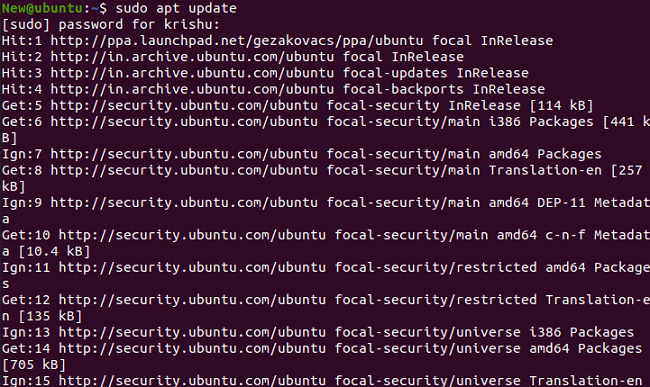
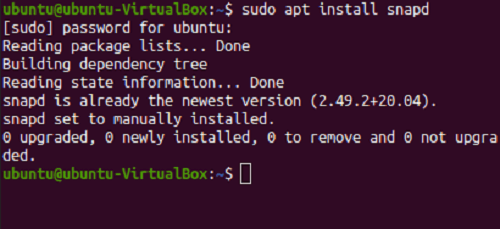

We will see that Linux is not so different as compared to the Windows operating systems and other operating systems in several ways, especially when it comes to utilizing the system for getting work done during our introduction to Ubuntu.
Next TopicUbuntu Browsers
|
 For Videos Join Our Youtube Channel: Join Now
For Videos Join Our Youtube Channel: Join Now
Feedback
- Send your Feedback to [email protected]
Help Others, Please Share





